Emission Systems - 1971 Test Procedures
To test for a possible inoperative solenoid, remove the wires from the solenoid. With jumper wires, ground one of the terminals, and jump the other terminal to the battery (Fig 71-t1). If the solenoid plunger extends, the electrical operation of the solenoid is satisfactory. If the plunger does not operate, the solenoid is defective and must be replace. If the solenoid test satisfactorily, proceed with the next test
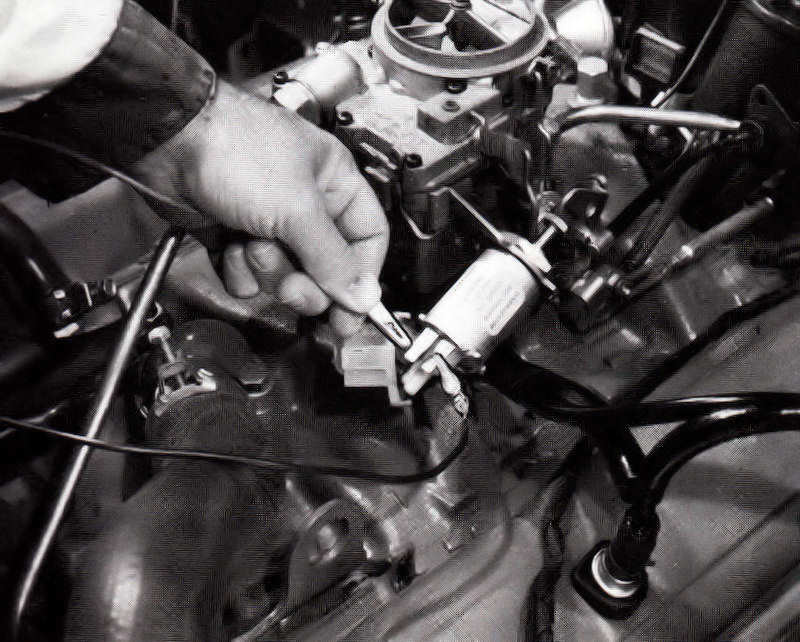
Fig 71-t1 - Checking Solenoid
Check for a possible malfunction in the transmission switch. On cars equipped with turbo Hydra-matic transmission, the lever must be in the reverse for the test.
Caution: Be sure to set the parking brake.
On cars equipped with manual transmissions, lever must be in high gear, the key must be on, but the engine should not be running. On cars equipped with Powerglide, the rear wheels must be off the ground. Accelerate to the upshift point for the test.
First, normalize the engine. Then set the transmission as outlined above, and observe the CEC solenoid plunger. If the plunger does come out at this point, the transmission switch is satisfactory. If the plunger does not come out, check the circuit by removing the double connecter at the reversing relay (Fig 71_t2). If the CEC solenoid plunger activates when the double connector is removed, the transmission switch is defective and must be replace. If the plunger still has not come out, make the reversing relay.
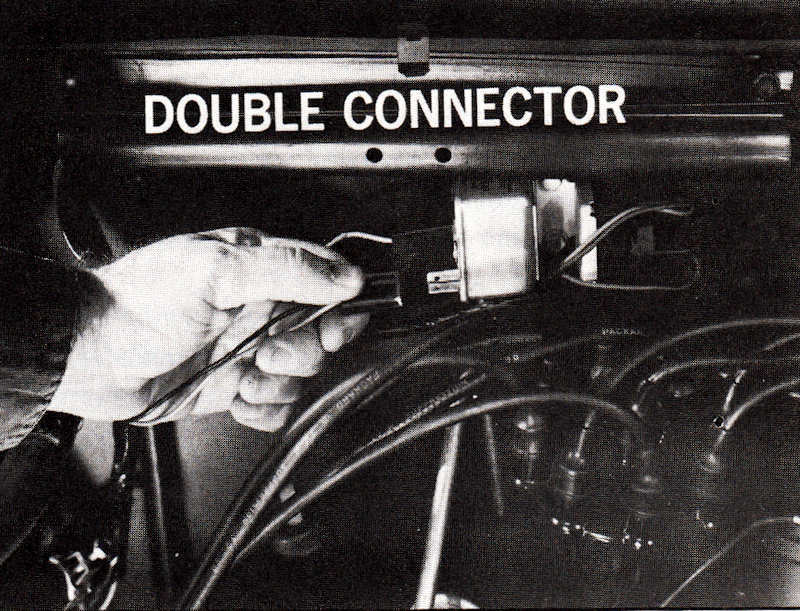
Fig 71-t2 - Checking TCS Switch
Ground the single wire contact on the reversing relay (Fig 71-t3). If this energizes the CEC solenoid plunger, the reversing relay is defective and must be replaced.
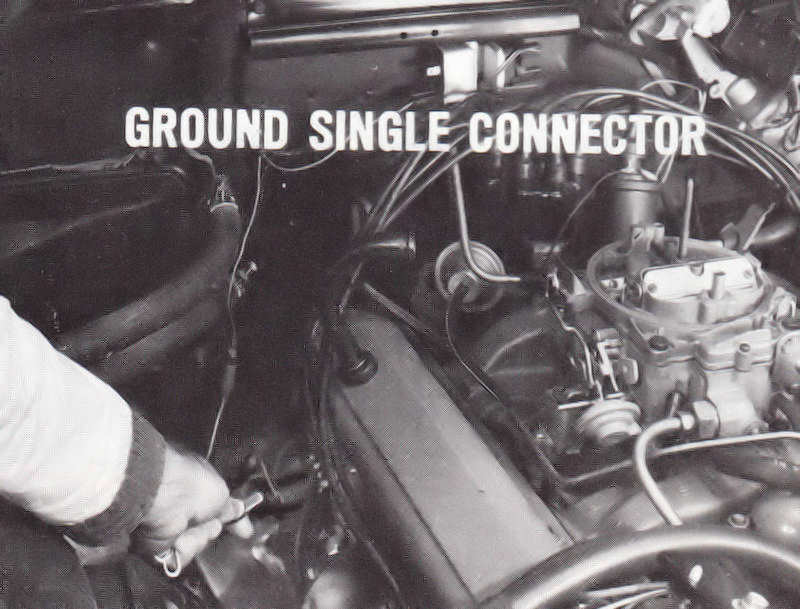
Fig 71-t3 - Checking Reversing Relay
The last test in this series is for a suspected defective temperature switch. On a cold engine, turn the ignition switch on and observe the solenoid. If the plunger does not pop out, or if it does come out a retracts after 25 seconds, remove the green lead with withe stripe at the temperature switch and ground the wire (Fig 71-t4). The solenoid should activate after about 20 seconds. This would indicate a defective temperature switch. On a warm engine, allow it to cool. Then, with the wires connected and the unit grounded, the solenoid should energize and remain energized. If it does not, the switch is defective.
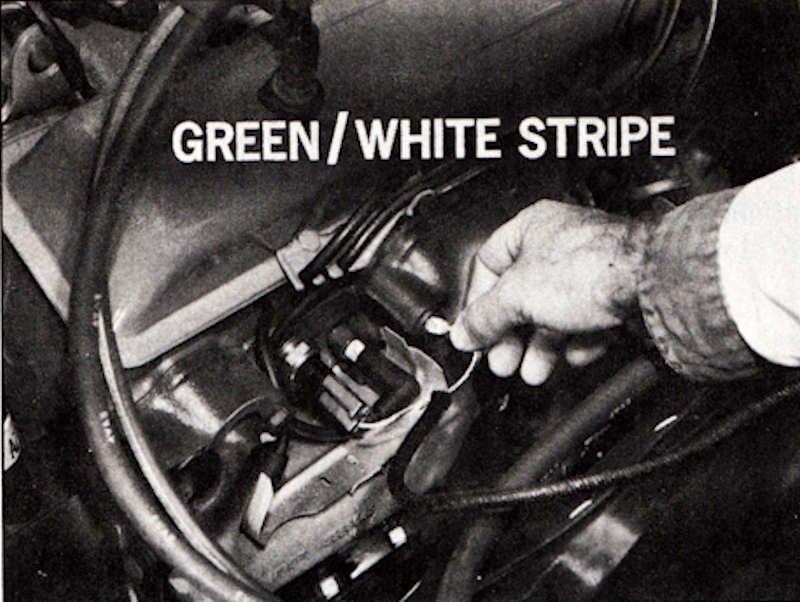
Fig 71-t4 - Checking Temperature Switch
Troubleshooting complaints of excessive creep at idle, high idle speeds, and dieseling, the CEC solenoid could be in the energized position caused by the solenoid, the time-delay relay, the reversing relay, or the temperature sending unit. There are four basic tests to perform.
Check the CEC solenoid plunger for free movement. Check the plunger for correct adjustment. The solenoid should de-energize with the ignition off and everything properly adjusted and moving freely. If the plunger remains out, remove the tan ground leads and turn the ignition switch on. If the unit does not de-energize, it is defective and must be replaced. If it does de-energize, check the other components of the system.
With the transmission in neutral and the temperature switch wire connector remove from the switch, turn the ignition on. The solenoid should energize for approximately 20 seconds and then de-energize. If it does not, remove the single wire lead from the connector on the time-delay relay (Fig 71-t5). The solenoid should de-energize, meaning the delay relay is faulty and should be replaced.
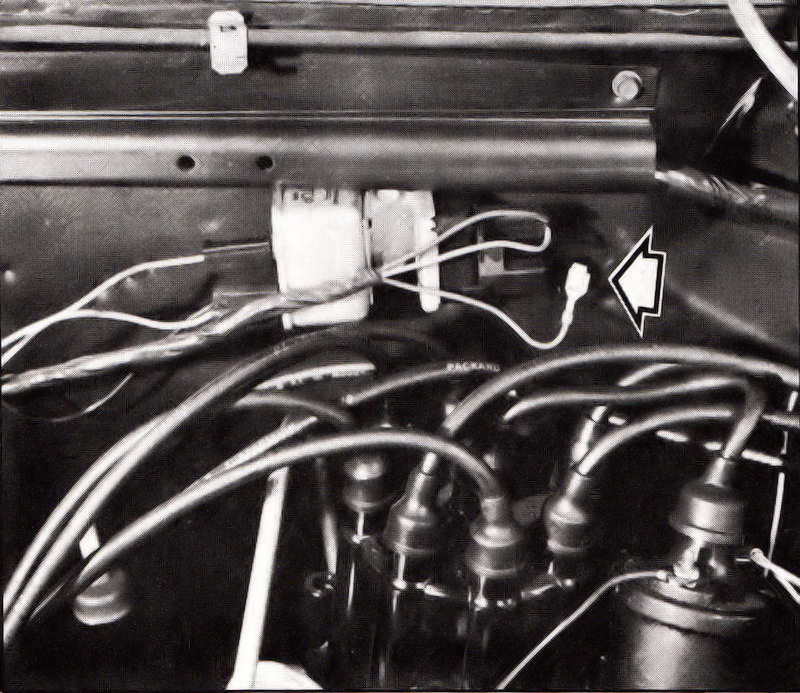
Fig 71-t5 - Checking Delay Relay
Make sure all wires are connected to the reversing relay and transmission switch, as a loose wire could be affecting the solenoid. Turn the ignition on, and remove the single wire lead from the reversing relay (Fig 71-t6). The solenoid should de-energize. If it does the reversing relay is defective and must be replaced. If it does not, proceed to the last test.
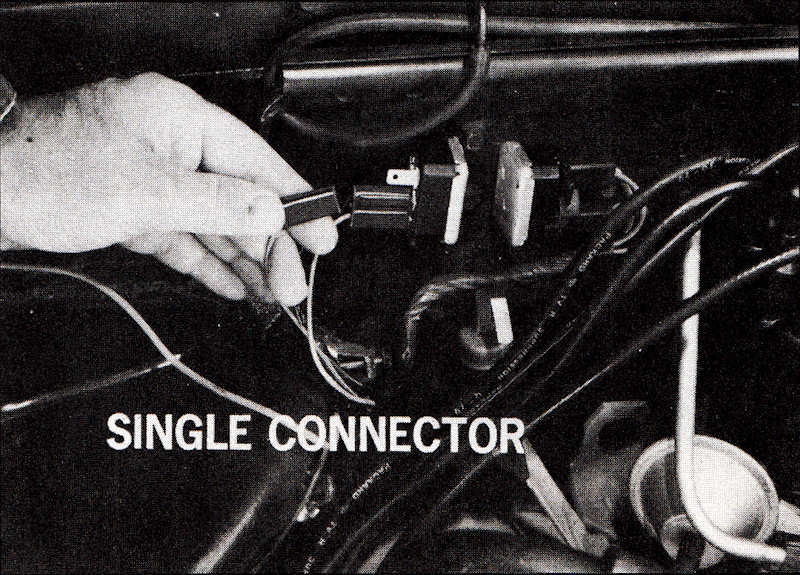
Fig 71-t6 - Checking Reversing Relay
Bring the engine to operating temperature with the transmission in neutral. Remove the connector from the temperature sending unit and wait approximately 25 seconds. If the solenoid de-energizes, the temperature switch is defective and must be replaced. Double-check by replacing the wire. The solenoid should re-energize after about 20 seconds, indicating that the cold override points are closed.
![]() Mention you saw it on © ChevelleWorld and please give the site credit for the
information.
Mention you saw it on © ChevelleWorld and please give the site credit for the
information.
![]() Be sure to visit my ChevelleCD site for
Chevelle CDs, challenge coins, and other gifts for that Chevelle fan in your
family and my
Stickers & Calendars website for custom stickers and calendars with your
favorite car/pet/occasion.
Be sure to visit my ChevelleCD site for
Chevelle CDs, challenge coins, and other gifts for that Chevelle fan in your
family and my
Stickers & Calendars website for custom stickers and calendars with your
favorite car/pet/occasion.
Say you saw it here on © ChevelleWorld

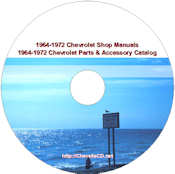


Want more in-depth information on 1964-1972 Chevelles? My Facts and SS Guide
program CD, my Shop Manuals & Parts Catalog program DVD, and my 1964-1972
Trim Tag, Warranty Card program CD and my Chevy Numbers program
CD. Check them and other informative
program CDs at my https://chevellecd.net
website.
© ChevelleWorld

 1964 Chevelle
1964 Chevelle 1965 Chevelle
1965 Chevelle 1966 Chevelle
1966 Chevelle 1967 Chevelle
1967 Chevelle 1968 Chevelle
1968 Chevelle 1969 Chevelle
1969 Chevelle 1970 Chevelle
1970 Chevelle 1971 Chevelle
1971 Chevelle 1972 Chevelle
1972 Chevelle


